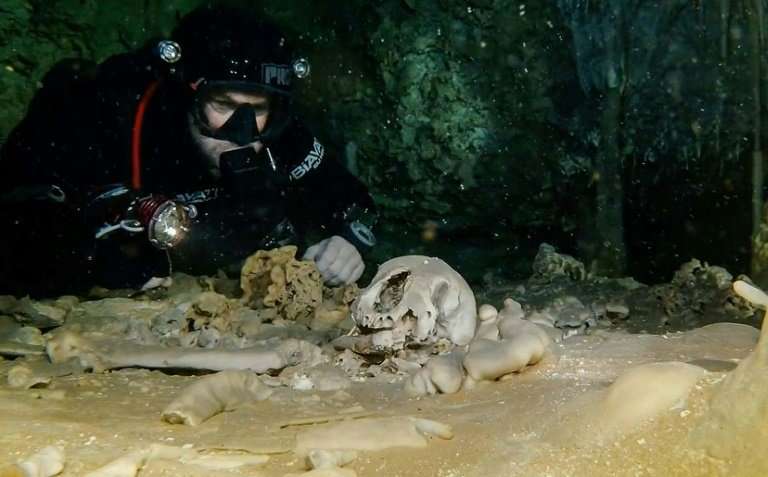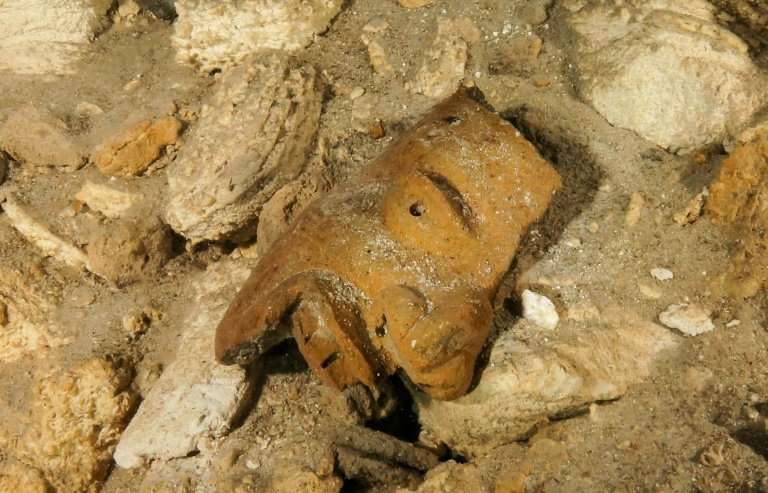Archaeologists find fossils, Mayan relics in giant underwater cave in Mexico

Archaeologists who have been exploring the world's largest underwater cave—recently discovered in Mexico—presented their findings Monday, including fossils of giant sloths and an elaborate shrine to the Mayan god of commerce.
Researchers discovered last month that two large networks of underwater caves in Mexico's Yucatan peninsula, the Sac Actun and Dos Ojos networks, are in fact connected, forming the largest such structure on Earth.
Diving with SCUBA gear, they have been exploring the ancient relics left in the caves over the millenia, in a project sponsored by Mexico's National Institute of Anthropology and History (INAH).
Researchers believe the water level in the caves has fluctuated over time, and that they were a source of water in times of severe drought—a sometimes perilous one.
Some of the animals and humans who ventured inside never made it out alive. Today, their remains are a treasure trove for scientists, enabling them to piece together bits of the cave's history dating all the way back to the Pleistocene epoch (2.6 million to 11,700 years ago).
The animal remains include gomphotheres—an extinct elephant-like animal—as well as giant sloths and bears, archaeologists told a press conference.
Then there are the artefacts left inside by humans: burnt human bones, ceramics, wall etchings and more.

"It is very unlikely that there is another site in the world with these characteristics. There is an impressive amount of archaeological artefacts inside, and the level of preservation is also impressive," said Guillermo de Anda, an underwater archaeologist.
The relics include a shrine to the Mayan god of war and commerce, with a staircase accessed through a sink-hole in the middle of the jungle.
Many other of the hundreds of sink-holes that connect to the cave have elaborate signs of ritual activity around them, archaeologists said.
The ancient Mayans viewed caves, "and especially ones that led to water, as extremely sacred places," the INAH said.
© 2018 AFP



















